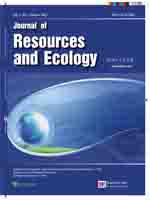The major function of clover in a winter wheat—white clover intercropping system is to supply nitrogen (N) for the wheat. A field experiment was conducted at Yucheng Comprehensive Station of the Chinese Academy of Sciences, to evaluate the effect of cutting white clover on N fixation and the transfer of fixed N to the associated winter wheat. A method of 15N natural abundance was used to determine the nitrogen dynamics in the intercropping system. The results showed that the amount of N transferred from the clover to the wheat, throughout the growing season, varied between 34.4 and 57.5 kg ha-1. Compared to leaving the clover standing, cutting the clover increased the amount of N that accumulated in the soil and also resulted in reduced N concentrations in the leaves and stems of the wheat. Using the cut clover as mulch between wheat rows led to decreased N concentrations in the wheat plants' leaves and stems. The present study provides preliminary information on the amount of N transferred from clover to wheat in an intercropping system.
How to translate text using browser tools
1 March 2012
Impact of Cutting a Clover Crop on the Nitrogen Supplied to Winter Wheat in an Intercropping System
Sun Zhenzhong,
Ouyang Zhu,
Li Fadong,
Wu Lanfang
ACCESS THE FULL ARTICLE

Journal of Resources and Ecology
Vol. 3 • No. 1
March 2012
Vol. 3 • No. 1
March 2012
15N natural abundance method
intercropping
nitrogen transfer
white clover
winter wheat





